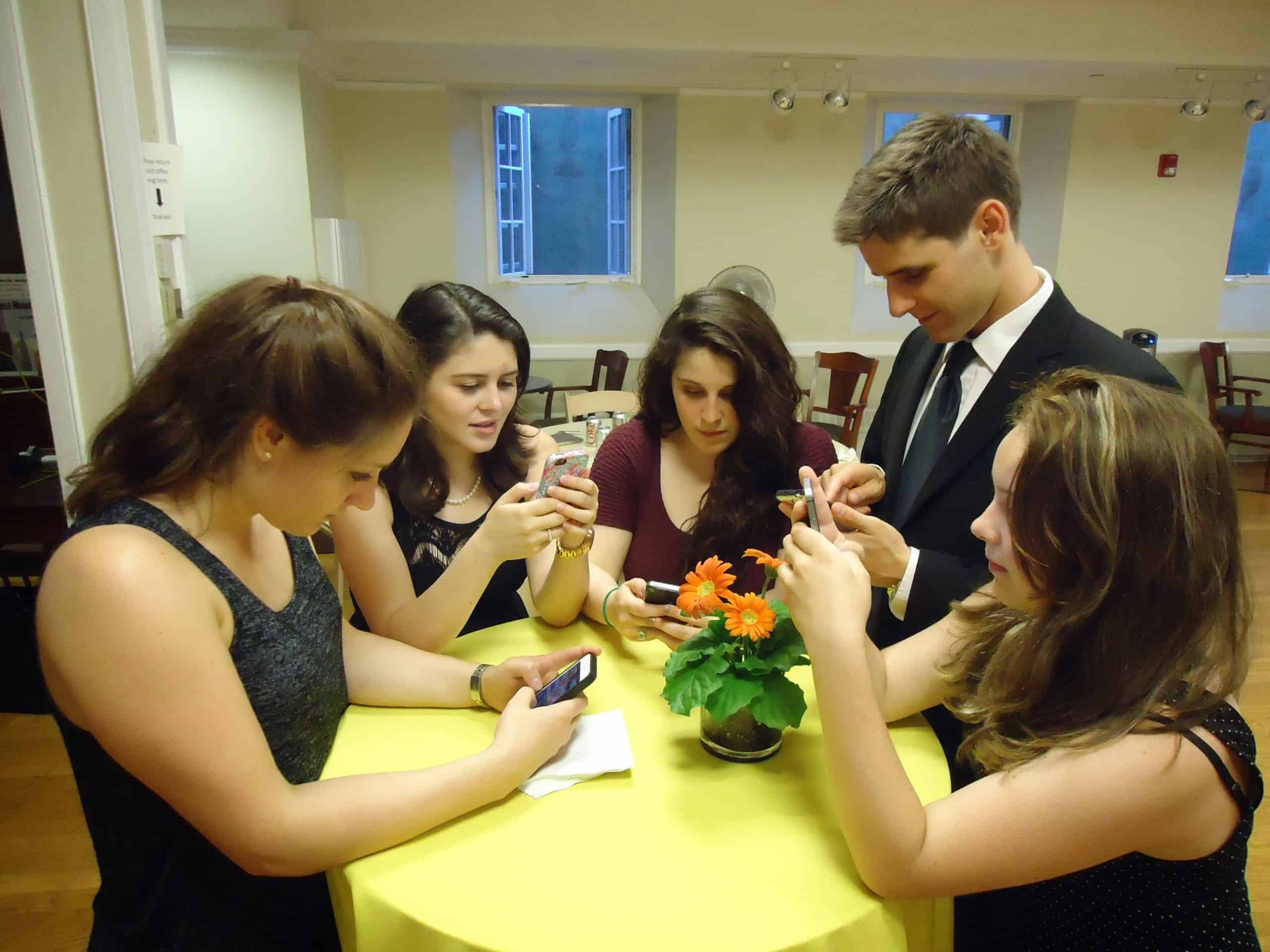In an age of screen challenges, how do we prevent problems?
Hello! I’m back from a family vacation—a road trip to the Grand Canyon! I was trying not to be TOO much like Clark Griswold from National Lampoon’s Vacation, but there might have been a little of that. Screens were sometimes a challenge with my three boys, but the goal is balance, and I think we did pretty well. I’m also happy to report that my book with co-author Dr. Jon Lasser came out August 1. It’s Tech Generation: Raising Balanced Kids in a Hyper-Connected World. A number of my blogs and videos are based upon content in the book but there’s a lot more in the book. I hope you check it out. My latest vlog is about the prevention (Green Light Level) of the Tech Happy Life model.
Transcript for the Green Light Level of the Tech Happy Life Model
In today’s episode, we’re going to look at the second level of the Tech Happy Life Model. In the last episode, we looked at the foundation of the model, the first level. It’s about building the relationship. Now, we’re on to the second level of the model, which is the Green Light Level, or the Preventative Level. So, as you recall last time, the Tech Happy Life Model consists of 4 levels. We have, at the base, the relationship. It’s about building the relationship. Then we have in this week’s episode the Green Light or Preventative Level. Then we have the Yellow Light Level, which is to address emerging problems, and then at the top of the pyramid we have the Red Light Level, which is about intervening when severe problems emerge.
Getting Our Kids Plugged Into Other Activities (Non-Screen)
So, as one of the strategies at the at the Green Light or Preventative Level is to plug our kids into other activities. Almost anything that gets them sinking their teeth into another engaging, need-satisfying activity. The real benefit here is they’re enjoying the activity for one, but it naturally displaces the screen time. You don’t have to fight that fight. When you’re plugging kids into an activity, here’s a sub-strategy: Seek their input. If you’re dictating to them what they should be engaged in, that can cause other problems, as you, the parent, are controlling what they do. So, this doesn’t mean that our kids get to tell us exactly what they want to be involved in—there are reasonable limits we have to set—but we have to engage them in the conversation and listen to their input. If we’re able to plug them into an activity that they’re choosing, they are more likely to follow-through with it.
Wait Until Developmentally Appropriate
Another good preventative strategy is to limit our children’s access to technology until they are developmentally appropriate. That means that when our 8-year-old is asking for a smartphone or a Snapchat account, the answer is no. It’s not appropriate for their developmental level.
While we may not want them to be an early adopter, but at the same time we may not want to be the very last to give our child access to certain technologies, like a smartphone. If all of their friends have a smartphone in middle school, and that’s developmentally appropriate—that seems to be about the age kids are getting it—and you wait until 10th grade, that’s going to cause a lot of friction. So, you want to be not an early adopter, but not the very last; somewhere in the middle. (Assuming that your child seems mature enough to handle that particular technology).
Steer Away from “Addictive” Games
Related to this point of not being an early adopter is to steer our kids away from technologies that are known to be addictive (or, at least, very time-consuming). And this can apply a certain games in particular. Some games are so immersive and time-consuming, and you hear them even referred to as “addictive games”—you might want to consider steering your child away from such a game. For instance, World of Warcraft. At one point I read an article that said the average player plays 23 hours a week for the average player. If I were growing up as a teenager now, a game like World of Warcraft would have it’s hooks in me so bad, I would probably never want to leave my room! So, you may want to consider which technologies and which games you are letting your child get involved in because once it gets the hooks in, it’s hard to get it away from them.
Sometimes the Winning Move is Not to Play
I’m stealing a little bit from the movie War Games, where the tagline was, “The only winning move is not to play.” (If you haven’t seen it I highly recommend it!) The idea is to limit access to technologies at certain times in certain places, because you don’t want to fight that fight. That’s not the battle to have. Don’t have the fight to begin with by eliminating access.
Turn Off Notifications
This is the really big point, and I cannot emphasize it enough. When I present on this topic, I’ve had people come back to me later on to say this was the most important strategy that helped them out. It’s this – turn off all chimes, ringers, push notifications that you can. A buzzing phone is going to take our attention away from the people we’re with or whatever activity we’re involved with to automatically turn it to the phone. Now, we may not answer the phone, but our attention is still turned towards the phone. And the reason is this: 10,000 years ago, when we were at a watering hole on the Savannah, if a twig broke behind us and we did not turn our heads to look, we could be eaten by a lion. So, we’re hardwired to respond to any noises or vibrations. We simply cannot help it. So we don’t want to fight that fight – Just say “no” to push notifications.
No Screens During Certain Times or in Certain Places
Technology should not be allowed at meals. If you think about it, meals are sacred. They go back. Historically, breaking bread is communal—It binds us together. Having technologies present at meals separates us. So, we want to eliminate technology from meals. I’m talking at home at the dinner table, when you go out to eat, not giving kids iPads when you go out to eat—not letting them sit and watch a movie at dinner or anything like that. We want to use that time to connect with each other.
Another one is before school. Don’t allow your child to access technology before school. Now, I realize as they become teens this becomes a different ball of wax, but while you can, when they’re younger don’t let kids access technology before school. We want them to get prepared for school, with their mind set on school. It’s also difficult for kids to transition from the screen to school and stay focused, listening to the teacher, and doing their work, when they were just engaged with some fun, stimulating game.
Bathrooms are another area to limit access to technologies. This should apply to everyone in the household. There are a sorts of reasons to limit access to technologies in the bathroom. Many have to do with hygiene, but I want to say—teen boys in the bathroom with smartphones, ya know, not the best combination. So let’s just not allow this: Keep it off grounds.
Another area that cell phone use should be eliminated in is in the car while driving. This applies to you as a parent, but also your teen driver. Even with Bluetooth phone calls, there is solid research to indicate that causes distracted driving. Even hands-free, our attention is partially on the conversation we’re having, and that causes an increase in accident rates. Here’s some great news. There is a feature built into the iOs 11, if you have an iPhone. I’m sure there’s a similar feature on the android phones, but it’s “Do Not Disturb While Driving.”
I cannot emphasize this enough – enable that feature of your phone! Anyone calling or texting while you’re driving when that’s enabled will get an automated message that says you’re driving and you’ll get back with them after you’re done. You can tailor this message anyway you want. I highly encourage you to eliminate the temptation to answer the phone. And again, even when the phone buzzes, ti takes the attention away. This way, if you have the “Do Not Disturb While Driving” feature enabled, it won’t be a problem to begin with.

